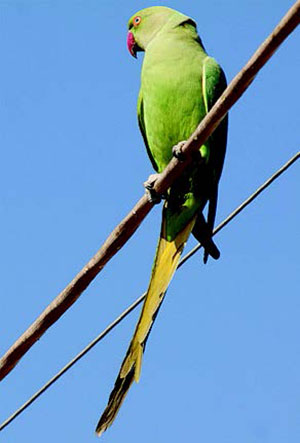| Nature Notes |
- Published: Wednesday, 30 July 2014 23:20
|
|
|
by Adele Brand It was the world’s gaudiest peanut feeder: the clean tricolour of a woodpecker on one side, offset by the lime yellow and Caribbean blue of a – well, my international parrot book suggested it was a pale-headed rosella, originally from Australia, and presumably in my garden via someone’s empty birdcage. The garden birds didn’t seem surprised by their glamorous visitor, although for weeks afterwards I heard starlings mimicking its cheerful call. That was a decade ago. These days, seeing parrots in Surrey is easier than finding sparrows. Ringnecked parakeets cross the sky in green droves, the latest in a long line of wild species we’ve either pulled out of the North Downs’ natural web or sown in. Like a statue from a mould that is now broken, ecosystems always show hints of the pressures that originally forged them. It was wolves that whittled deer to be so watchful even if the foxes that historically scavenged wolfkilled carrion now exploit fast food litter instead. Wildcats, pine martens and red squirrels are only a memory, but rabbits, pheasants, little owls and rats have all hitched a lift with us, joined more recently by grey squirrels and rhododendron. As humanity changes the natural world ever more rapidly, it’s hard not to wonder what the common garden visitors will be in a century’s time. |







